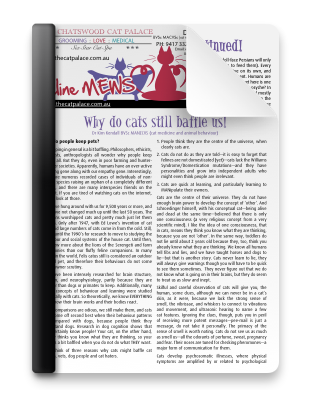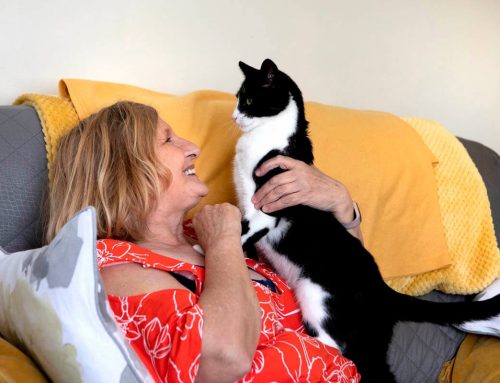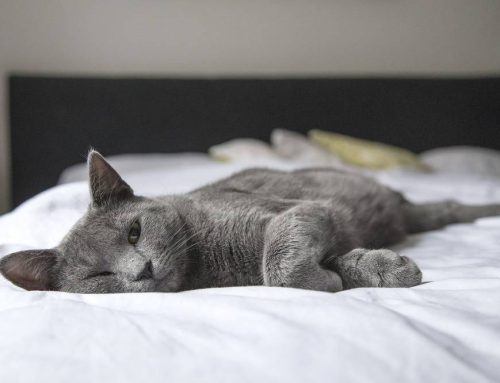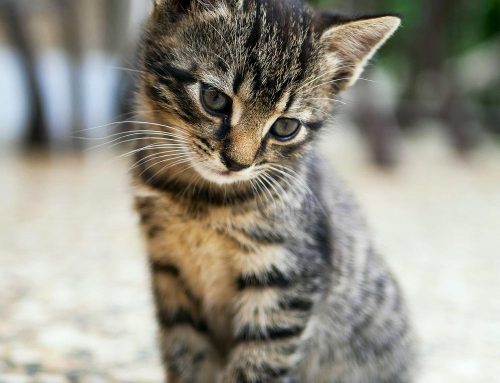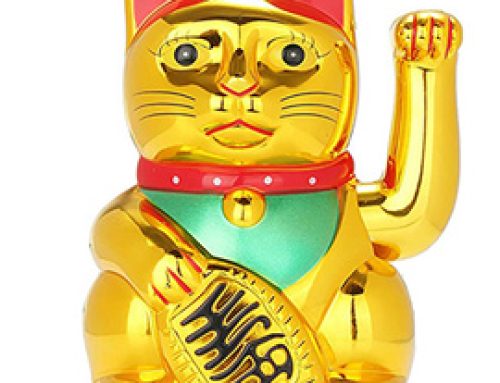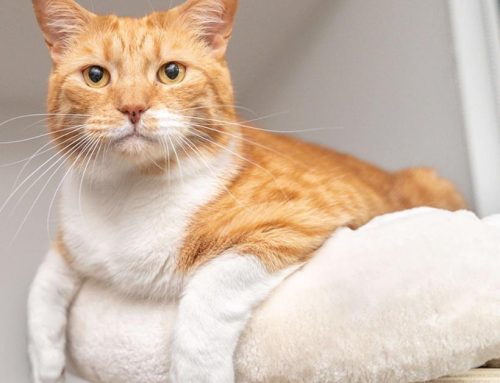Dr Kim Kendall BVSc MANZCVS (cat medicine and animal behaviour)
Why do people keep pets?
Pet keeping in general is a bit baffling. Philosophers, ethicists, zoologists, anthropologists all wonder why people keep pets at all. But they do, even in poor farming and hunter-gatherer societies. Apparently, humans have an over-active nurturing gene along with our empathy gene. Interestingly, there are numerus recorded cases of individuals of non-human species raising an orphan of a completely different species, and there are many interspecies friends on the internet. If you are tired of watching cats on the internet, have a look at those.
Cats have hung around with us for 9,500 years or more, and they have not changed much up until the last 50 years. The Egyptians worshipped cats and pretty much just let them be cats. Only after 1947, with Ed Lowe’s invention of cat litter, did large numbers of cats come in from the cold. Still, it took until the 1990’s for research to move to studying the behaviour and social systems of the house cat. Until then, we knew more about the lions of the Serengeti and farm cat colonies than our fluffy feline companions. In many places in the world, Felis catus still is considered an outdoor or rural pet, and therefore their behaviours do not come under owner scrutiny.
Cats have been intensely researched for brain structure, function, and neurophysiology, partly because they are cheaper than dogs or primates to keep. Additionally, many of the concepts of behaviour and learning were studied specifically with cats. So theoretically, we know EVERYTHING about how their brain works and their bodies react.
While comparisons are odious, we still make them, and cats have come off second best when their behaviour patterns are compared with dogs, because people think they understand dogs. Research in dog cognition shows that dogs certainly know people! Your cat, on the other hand, already thinks you know what they are thinking, so your feline is a bit baffled when you do not do what THEY want.
I can think of three reasons why cats might baffle cat owners, vets, dog people and cat haters.
- 1. People think they are the centre of the universe, when clearly cats are.
- 2. Cats do not do as they are told—it is easy to forget that felines are not domesticated (yet)—cats lack the Williams Syndrome/Domestication mutations—and they have personalities and grow into independent adults who might even think people are irrelevant.
- 3. Cats are quick at learning, and particularly learning to MANipulate their owners.
Cats are the centre of their universe. They do not have enough brain power to develop the concept of ‘other’. And Schroedinger himself, with his conceptual cat—being alive and dead at the same time—believed that there is only one consciousness (a very religious concept from a very scientific mind). I like the idea of one consciousness, that in cats, means they think you know what they are thinking, because you are not ‘other’. In the same way, toddlers do not lie until about 2 years old because they, too, think you already know what they are thinking. We know all humans tell fibs and lies, and we have taught horses and dogs to lie—but that is another story. Cats never learn to lie, they will always give warnings though you will have to be quick to see them sometimes. They never figure out that we do not know what is going on in their brains, but they do seem to treat us as slow and inept.
Skilful and careful observation of cats will give you, the human, some clues, although we can never be in a cat’s skin, as it were, because we lack the strong sense of smell, the vibrissae, and whiskers to connect to vibrations and movement, and ultrasonic hearing to name a few cat features. Ignoring the clues, though, puts you in peril of receiving more potent messages—pee-mail is just a message, do not take it personally. The primacy of the sense of smell is worth noting. Cats do not see us as much as smell us—all the odorants of perfume, sweat, pregnancy and fear. Their noses are tuned for checking pheromones—a major form of communication for them.
Cats develop psychosomatic illnesses, where physical symptoms are amplified by or related to psychological factors. The default term ‘stress’ can be part of the physical manifestation of the problem up to and including cancer. Several diseases occur regularly in cats whose environment is of insufficient quality.
Paradoxically, B. Skinner’s levers and Thorndike’s cat-in-a-box have left scientists and people in general with a more mechanistic view of cat behaviour. And some scientists question whether non-primates even have emotions, or indeed feelings. We’ve not come far from the vivisectionist who, back in the 1800’s, stated ‘the crying of a dog (under the knife) is no more anime than the squeaking of a door’.
Another part of the answer to why cats seem to baffle us, is that the other companion animals we have—dogs, rabbits, ferrets, pet rats and mice, and also donkeys, pigs, horses, and goats, will all look towards humans. All these species have been domesticated, not just tamed. In silver foxes, the evolution from the very wild anti-human fox to the rather corgi-like domesticated fox that seeks human attention, took less than 50 years of directed selection by the Russian researchers. Several individuals from species as different as kangaroos and dolphins have turned to humans for help. We’re not so good at noticing other animal species helping each other though, but since interspecies play is all over YouTube, it must be possible to communicate needs. Play is a special form of communication, where both participants agree to inhibit or reduce the full impact of the activity. Cats will play with us, but neither cats nor wolves will look to humans for help – they will try to solve the impossible puzzle alone.
Domestication involves humans overriding the natural selection within the species, and the animals evolving to cope with the pressure of increased numbers of, often unrelated, individuals and still being able to grow to maturity and breed, on human-selected food.
So, once Felis catus is comprehensively domesticated, we will probably end up with a bigger, fluffier ferret. Highly social within the species – you can keep more of them together. Sleeps 23 hours a day, plays with toys and uses a litter tray. Doesn’t bite once it knows you and sheds less hair. Body odour still a problem as are stinky faeces. Also difficult to train due to a short attention span.
So, is the current cat domesticated?
Not so much. Felines start life as sociable kittens—they need food and warmth from someone else—and then grows into an independent adult with a variable attitude toward getting close to people and other species. Every cat is representative, but no cat is average. Associating with humans, but not having their breeding regulated, has given us pets who have variations in temperament from the hyper-social (bold cat) to very shy (or timid) ones, who can nevertheless tolerate the pressure of close association with people. Truly wild cats or feral cats do not want anything to do with people. It also means that every cat born is a hunter at heart (though some of the highly bred ones like doll-face Persians will only be able to hunt out the next person to feed them). Every cat born is equipped to hunt and survive on its own, and therein lies a significant source of bafflement. Humans are tuned to nurture, feed and protect their pets, yet here is one who does not need them. OUCH? A blow to the psyche? In the food chain, cats are part prey, part predator and mostly pessimistic, and they swapped part of their brain—in the prorean gyrus—away from executive function (think before you act) for athleticism. After all, the archetypical, historical cat, has to react quickly either to catch prey or get away from a predator. No time to stop and think. Good swap, as it has allowed Felis catus to proliferate in all parts of the world, even competing and interbreeding successfully with the native cats.
Individual cats do have personalities—as do pretty much any species that moves—vertebrates like us (mammals), birds, fish, and reptiles, through to cephalopod molluscs like octopus and cuttle fish. Those personalities have genetic and environmental forces on them, and individuals learn different behaviours that help them survive in their particular environment. Cat enthusiasts are breeding cats for looks and temperament—in my experience we have the bold Burmese who head butts everything including cars and dogs—to the more aloof Russian Blue and then the hyper-bonding Rag doll. Each breed has a set of physical and temperament parameters that selective breeding is stabilising in the population, which makes them a reliable choice of pet for people so inclined to live with a cat with those particular traits. In fact, there is genetic evidence that the highly selected breeds like Abyssinians and Birmans, have the modified neural crest-related genes associated with behaviour and reward, as predicted by the domestication syndrome hypothesis. These breeds could therefore be considered domestiCATed, although the hunting mind-set never been bred out. And then there is the learned component.
How does this work?
Cats learn fast. But they are hard to train. Their abilities to make connections between separate events has been studied intensely, but we cannot quite believe it in our pets. Cats watch us very closely and are themselves excellent trainers or MANipulators. The purr for yes, the claws for no. The dialect that each cat learns to use for their owner. It has been shown that your cat makes specific sounds, in an individual conversation that your cat has and is just for you. Owners can recognise what their cat’s vocal command is, but not what another cat’s cry means. However, training a cat is tricky because only 1 in 3 will respond to food rewards, so teaching them to differentiate between A and B so you can ‘ask’ them questions becomes problematic. It also means that cat cognition is poorly represented in the scientific literature because it is so difficult to get a consistent picture of a cat’s preferences when it just stops doing anything rather than work for food as a reward for a choice. Only recently was it even confirmed that cats do have colour vision—previous research showed only that they just do not care enough to demonstrate it in preference tests. How Cat!
When you consider cats are not far removed from a reproductively intact short-lived desert-dweller with 2 square miles of sand to eliminate in a solitary hunter who catches but only shares their mouse with their kittens a physical and metabolic masterpiece designed to hunt and hide
MOST CATS ARE COPING REALLY WELL !
From my 25 years of data, 6% of cats have demonstrated problematic behaviours sufficiently frequently to prompt the owners to request my help resolving them. Not many ended up on Prozac. A further 4% have been treated for cystitis – those do need more help than we currently give them, but defining the trigger of their bladder spasm does give them some longterm relief. In my opinion MEMO helps more than making eat soup and diluting their urine.
Now in the guise of being pets – Cats are under our Control
More and more cats are living indoors and in close contact with people and other pets, neutered and with no say in what or when they eat
Behavioural Consultation – requires that you ask the questions just like any medical consultation
So, now the reveal – Behavioural Science has questionnaires to identify repeatable, observable insights into what represents a high Quality of Life and what flags a low Quality of Life for cats – even to the point of a Life Not Worth Living (which is pretty confronting). These QoL assessments started with people, and were modified for animals with acute and chronic conditions such as pain scores, oncology and chronic kidney disease scores and are used mainly for end-of-life decisions. Tufts research into hoarding situations led them to develop a graphic representation of Live-Worth-Living down to Life not worth Living, where suffering is sufficient to be defined as Cruelty. It isn’t easy though – most require you to make up your own questions.
VetMetric for Cats – is a proprietary Online instrument from the University of Glasgow. It centres on ‘vitality’, ‘comfort’ and ‘emotional wellbeing’ to identify QoL. I’d buy it but I couldn’t find out how to do that. Maybe you have to be in the UK. A preliminary study for VetMetric was done to create the CHEW questionnaire. The CHEW instrument has 8 areas – Mobility, Energy, Eyes, Coat, Appetite, Engagement, Emotion (which is interesting because non-humans even having emotions is debated) and finally Fitness (basically BCS).
Welfare Quality – has been designed for production animals, and is flexible enough to be used in zoos. There are 4 components Good Feeding, Good Housing, Good Health, Appropriate Behaviour and sub divided into 12 criteria. It is then up to people who are interested and involved to create the actual scoring criteria which need to be sufficiently practical and detailed that untrained people can decide whether a component is present or absent. There are usually 30 or so of these sub-criteria There is an associated score, which is then totalled to produce a numerical assessment of QoL. It is designed to take away the subjectivity of assessments.
The Tufts University QoL is based on the Five Domains concept and is pretty to look at but confronting to contemplate. That lower left quadrant is an indictment of human control isn’t it?
International Cat Care have also created a QoL assessment – aimed mainly at Shelters but does have three Solid Foundation Stones as a general Guide. The standard ‘Well fed and free from pain’. Then ‘I feel Safe’ is interesting because it addresses the core conflict of cats – I am predator AND prey, and I want my own stuff’ to which is added the third component – Predictability. MINE MINE MINE and SAME SAME SAME. Something that seems obvious but maybe too easy. My other mantra is that People are the Problem because they want a small primate in their homes, not an accomplished independent hunter who chooses to live with us, and gets sick when the environment is crowded or unpredictable.
HHHHHMM (that is 5 H’s and 2 M’s) – this was developed to give vets and owners some guidelines to help prevent suffering while maximising time on earth. Some pretty useful questions, and a fairly flexible score.
Then there is a most immediately useful one – developed by Emmanuelle Titeux et al in France. This is a QoL assessment with questions and scores, designed specifically to discover whether an illness – Idopathic Ulcerative Dermatitis – could be recognised by an interrogation of the environment and resolved by environmental management. Doesn’t that sounds like FIC / FLUTD? Is this MEMO in disguise? The format LOOKS very much like the behavioural analyses recommended by out esteemed Behaviour Specialists. It can fit into a 30 minute consultation, while providing an assessment of where there are gaps in a cat’s QoL in their own home. Really interesting development by the Dermatologists! I would think the VetMetric Feline would be similar and even easier to work with as it is designed for online vet use. Gabrielle Lawson and Andrea Harvey discovered in their recent survey that upwards of 40% of Australian cats have urinary tract and peeing problems. What if those owners could fill out that one of the questionnaires? I think cat owners are probably resisting implementing the insights that are being created around investigating and moderating the influence of stress in SOME of their cats’ lives in their homes. Back to my first premise – MOST cats are coping well in their home environments. However, where the cat’s own coping skills have been tested to destruction, it is important for the welfare of that cat that some reforms are implemented. It would be even better to start with basic needs met.
And just to prove that assessment tools have come of age, there is a very recent meta-analysis of QoL tools in cats. I hope it just means that instruments of enhancement of cats’ lives has come of age, NOT that we are once again drilling down to minutiae that are not relevant to the individual cat.
I’m not an advocate of a PURR-fect life, just a good quality of life as defined by the cat. Not the human. Because in the end, in any set up between animals and owners- the animal has no choice, and it turns out that is what cats are craving. So, now the mantra is MINE MINE MIE and SAME SAME SAME plus CHOICE ! how cat to create an internal dichotomy. The SAME with CHOICE. EVERY CAT IS REPRESENTATIVE BUT NO CAT IS AVERAGE. The same actually goes for dogs, horses and others – it is just that domestication has probably given them better skills at coping with intensive involvement with humans. In fact, perhaps even craving human attention – but that is someone else’s talk.
Why has it come to this?
Where has the communiCATion between human and feline gone wrong? And what do we do that’s right? Here are a few key observations you can encourage owners to make, so cats are more comfortable in their environment, with their owners.
It’s not natural for a cat – to fly, sit on laps or be stroked for prolonged periods – some cats like it but it is not the default
Hugs – keep them for your primate acquaintances – studies show that even dogs aren’t that keen on being squished. Yes, some cats learn to like it, most don’t, and amazingly most cats will tolerate insufferable rudeness from toddlers – they seem to just know babies are a vulnerable subset.
It’s not natural for cats
To stare or be stared at except in aggressive encounters
To live in large groups or have cats, familiar or not, come and go
To vocalise over large distances
REMEMBER THOUGH – cats can LEARN – if in order TO SURVIVE, they have to tolerate or adapt to the circumstance they find themselves in, they will do it. Which is why they can be found alive in some pretty substandard accommodation supplied by people, as well as extreme terrain like deserts.
It is natural for cats
To hide from threats – or flee. They try not to fight, as damage – even just a bite – can be fatal for an animal with no natural social support.
To sleep 60% and rest for 20% of 24 hours – all that sleep was essential if hunting your own meal is required. There are not many more calories in a mouse than it costs to hunt it, so sleep is conserving energy, not being bone idle. And assessment of a cat’s sleep budget is actually an important parameter in measuring their general health in shelters, where they do this kind of research
To pee into clean sand in privacy (2 sq miles of desert) – this is now covered in the litany of litter tray discussions which I was surprised to discover, still has to be covered in consultations by our eminent specialists in behaviour. This really is using a brain surgeon to trim toenails. Litter tray solutions could be provided to the owner along with results of urine tests. I am assuming these cats have been referred by a vet and not just turned up to the specialists in desperation.
To Scratch Surfaces to leave scents and visual marks – this propensity has led to millions of cats losing the tips of their fingers in an attempt to save furniture. Fortunately, declawing is becoming obsolete in America and Canada, and was never allowed in Australia. I am finding more people wanting the plastic nails cap be put on their cats – apparently landlords have gotten hold of the idea that cats will destroy all the wooden fixtures in their house. It’s a compromise at least.
To Disperse or Migrate – cats leave the area rather than integrate or resolve conflict. This is big one, and a source of much intercat conflict. Divorce, for our pets, is not an option apparently. Creating timeshares and increasing resources is the basis of resolution and compromise, but sometimes rehoming is a better option. Remember that whatever complex program you and the client devise, the cat still has to understand, co-operate and compromise. Shelter studies showed that spraying cats did not spray in their new home. I think that’s an amazing insight into a cat’s mind. I spray HERE to solve THIS problem, and when that problem goes, I don’t have to spray any more
Use Distance-Increasing Signals to maintain ‘purr-sonal space’ is a similar story. Cats, as a species, don’t share their meals, sleeping spots or latrines. They don’t want to get into a tooth-and-claw fight because the winner can still be the loser if infection takes hold.
Be an Individual – they have ‘Purr-sonalities’ Exactly the point of having a cat. Dogs have personalities as well of course.
But cats do not enough brain power to be spiteful or vindictive. and it is YOUR problem if you don’t like the message. Probably stops cats from intergenerational feuds.
We can appreciate cats’ signals of affection though
- Tail UP greeting – it is a kitten behaviour that is repurposed to a general greeting and is thought to be the only affiliative long-distance indicator in little felids – though one cat purred at 67 decibels – nearly as loud as a vacuum cleaner in a quiet room
- Sitting within 0.5 metres of their favourite person, on the lap if the cat is so inclined – there is a genetic input but I’m not sure cats are easily trained or enticed into sitting on laps just because humans want that. I guess it comes down to the fact most people are really poor cat trainers.
- Purring – starts as care solicitation and cats can learn to reward us with it – are we just gullible humans or are cats just really good trainers?
- Rubbing as a greeting –they are really just making you smell like you belong but since people like it, the virtuous circle of rub-reward-rub-some-more gets started
- Meowing or chirping to let you know what is wanted from you – cats develop individual dialects with their owners. They observe what noise it is that they can make that will get their owner to do something for them. You really are always being closely observed by your cat so they can take advantage of you and your trainability.
Orcas and cats are excellent trainers of people. Humans can browbeat dogs and horses into doing what is wanted and accept ferrets for what they are and do. Orcas, elephants and all manner of ‘wild things’ will perform for food rewards. But cats—not so much. Unless you have trained the sociable, behaviourally flexible kitten, or own the 1 in 3 who like to perform for food rewards, you will probably only succeed in training your cat to do what it wants when you want it to. I maintain most owners (including myself) are not adept enough to train a cat or even a kitten. Our timing is off and our patience and purr-sistence is poor. If you have the right cat and take the time, you can teach a cat like Gus—he won his inaugural swim in the Dog Race in 2019.
If you do put in the time and have the observational capacity, you can be one of the exceptional trainers can like Catmantoo—he has convinced Didja to do some spectacular things—but it is a looong process.
If we know so much now, why then, do cats still baffle us?
Maybe it is because everyone knows, or has heard of, or seen on the internet, a cat doing things that make us laugh. Or cry. To seem human, but just in that instant. For the rest of the day, even that cat needs to sleep safely and comfortably, eat a balanced diet, explore, play and be as social as it wants and no more. When contemplating our own cat’s needs, and their responses to our demands, it simply doesn’t suit us to put their needs above our own expectations, and possibly delusions.
In conclusion, I re-present the case that cats are the centre of the universe and they command us at their will.
Now that we have a repertoire of questions that are relevant to cats in their environment, and can reflect on their adaptability and admire their coping skills, we are more able to acknowledge their NEEDS and provide relevant resources. After all, as the gods they still consider themselves – it is all about the cat.


